Cold case sleuths believe they’ve found Jimmy Hoffa’s burial site at old Milwaukee County Stadium
A group of cold case crime investigators believe they have found the burial place of union boss Jimmy Hoffa at an old Major League Baseball stadium in Wisconsin.
Hoffa was 62 when he disappeared after a restaurant meeting on the outskirts of Detroit in July 1975, and his body has never been found.
For almost fifty years, police have been trying to find out where Hoffa – who was declared dead in 1982 – was buried.
Nonprofit organization Case Breakers said the “dying instructions of a police sergeant on an ace of spades” helped lead them to the alleged burial site at the old Milwaukee County Stadium.
It is next to the current Milwaukee Brewers stadium called American Family Field and the group says his body is located underneath where the previous arena’s third base was.
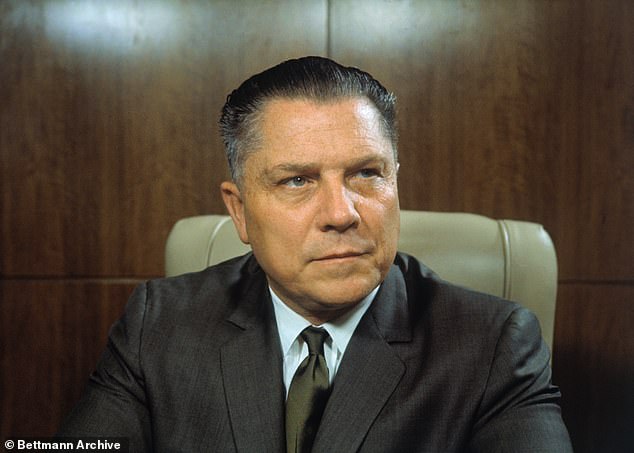
A group of cold case crime investigators believe they have found the burial place of union boss Jimmy Hoffa at an old Major League Baseball stadium in Wisconsin
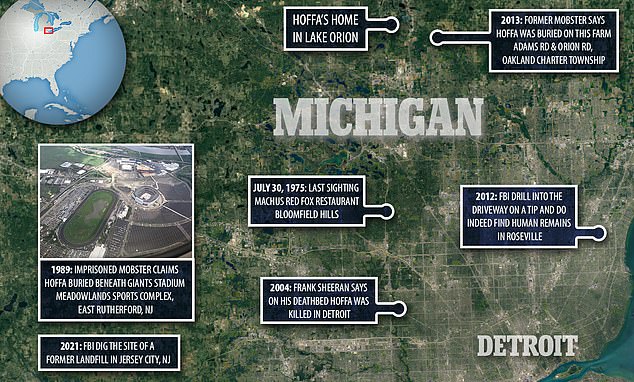
Jim Zimmerman, a former police officer, has been a member of the Case Breakers for thirteen years and is credited with finding the playing card allegedly written by a dying police sergeant believed to have been involved in Hoffa’s disappearance.
“Independent sources in three states have convinced volunteer investigators that CSI forensics will reveal Hoffa’s remains in a small field in the shadow of Milwaukee’s MLB stadium,” a press release said.
Three credible witnesses have alleged that Hoffa’s body was moved from another location six years before the demolition of Milwaukee County Stadium and “secretly buried under the third base of this old stadium in 1995.”
The alleged cemetery is located a short distance outside the fence of a Little League stadium that was built in 2002.
The Case Breakers team went to the site and used old aerial photographs and GPS satellite imagery, as well as “three times ground penetrating radar over the remote location.”
But the equipment could not detect further than one and a half meters due to an ‘unexpected clay layer’ that blocked the radar.
It is believed that excavation work took place and was ‘hastily dug up and filled in’.

Hoffa’s remains are believed to have been found in an alleged burial site at the old Milwaukee County Stadium (photo)
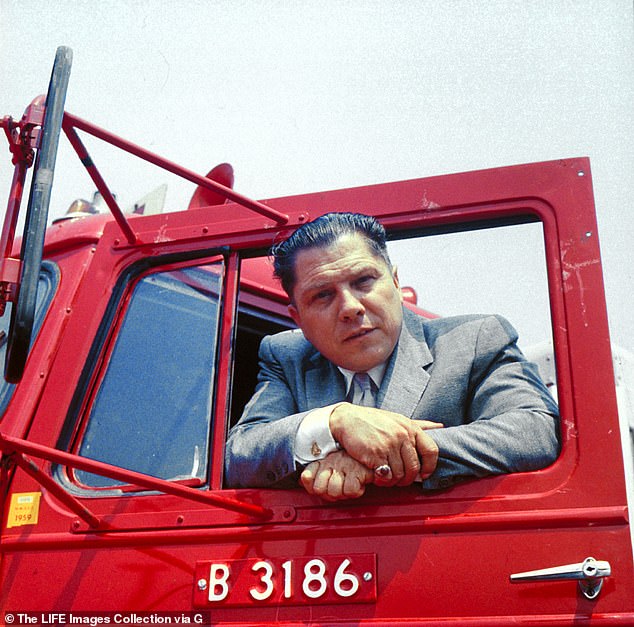
Hoffa’s disappearance at age 62 sparked decades of speculation after he vanished following a restaurant meeting on the outskirts of Detroit in July 1975.
Case Breakers founder Thomas J. Colbert shared Fox News digital that a ‘top’ cadaver dog expert was brought to the location. Retired officer Carren Corcoran and her dog Moxy are said to have given positive signals several times.
“This girl has, I think, over 200 cases of finding people dead or missing,” Colbert said.
“She’s phenomenal and she brought her dog and where does the dog go? Straight to the ground penetration radar spot three years earlier and that’s where we got excited.’
Moxy “pointed, wagged, barked and nosed his way to four ‘hits’ at the stadium’s old third base location,” the press release said.
Colbert added that the team would work with local law enforcement and the FBI to dig at the site.
The group said authorities have already agreed to investigate their claims after a “verbal walk through” with Case Breakers member Jim Christy, who was a federal investigator for 42 years.
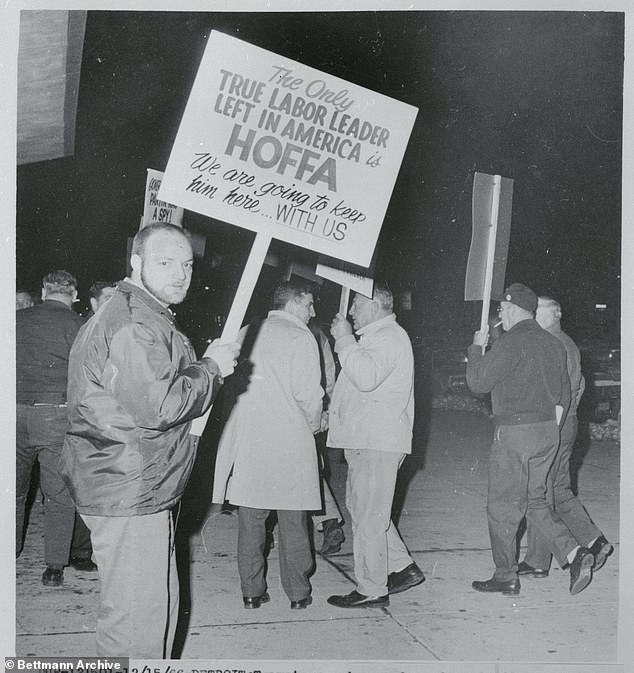
Supporters of Hoffa can be seen in Detroit in the 1960s when he was accused of jury tampering
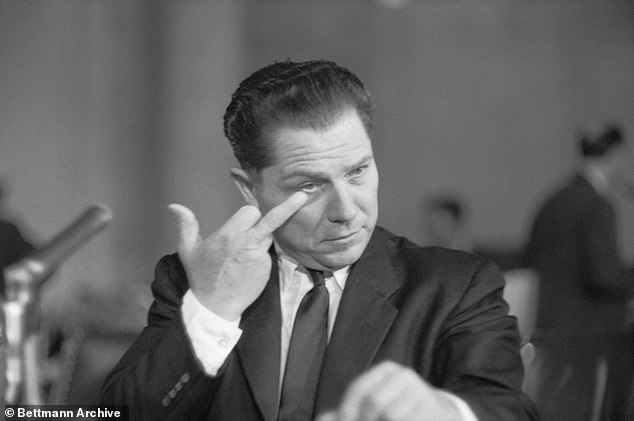
Hoffa makes a pointed gesture as he rubs his face during testimony before the Senate rackets investigation, overseen by Bobby Kennedy, his archrival
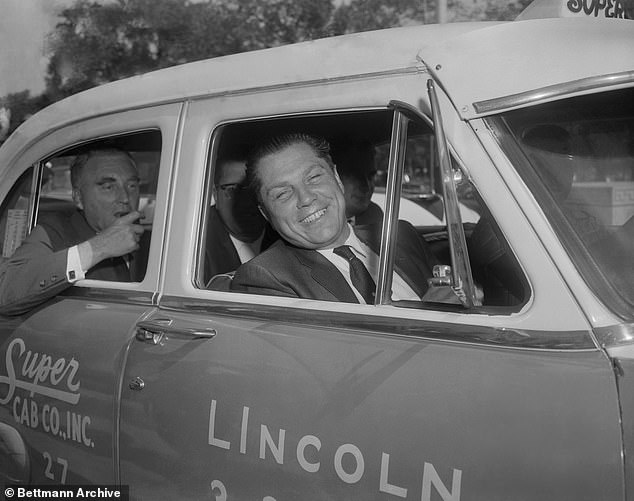
Hoffa is seen beaming as he leaves court after being acquitted by the Senate Rackets Committee
A native of Indiana, Hoffa had lived in the Detroit area since childhood and owned a cottage on Lake Orion, 40 miles north of downtown Detroit.
On July 30, 1975, he told his wife Josephine that he would be home at 4 p.m. to cook steaks for dinner, and left for a meeting at the Machus Red Fox restaurant twenty miles away in Bloomfield township.
Several hours later he called Josephine, angry that he had gotten up. He was never seen again; his green Pontiac Grand Ville was found in the restaurant parking lot the next day.
Hoffa, who was played by Al Pacino in Scorsese’s film, was an enormously powerful labor leader whose ties to the mafia alarmed Bobby Kennedy, the president’s brother and attorney general.
At the time, Hoffa was, as James Neff wrote in his 2015 book Vendetta, the “permanent president of the biggest, baddest, and most powerful labor union in American history.”
The union boss was convicted of bribery, conspiracy and jury tampering and served time in prison from 1967 to 1971.
Upon his release, he attempted to return to his powerful union position and resume his mafia ties, especially his connections to Anthony Provenzano, a capo in the Genovese crime family.
Provenzano was the head of a teamsters association in Union City, New Jersey.
The mafia leader was unimpressed by Hoffa’s attempt to return to his former ways, and relations between the two men deteriorated.
Provenzano would meet Hoffa at the restaurant in July 1975 to resolve their differences.
It was widely believed that Hoffa’s disappearance took place on Provenzano’s orders.
Over the years, several different sites have been searched.
